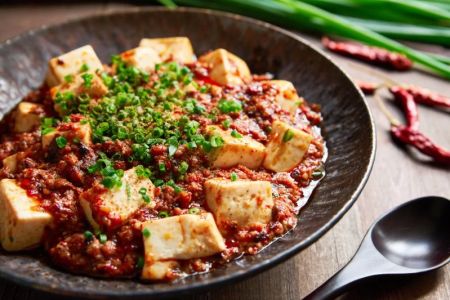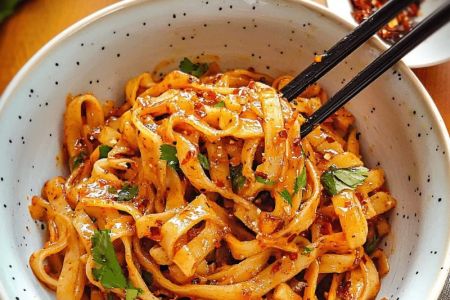- 1. Understanding Chinese Cuisine
- 2. Basic Ingredients for Chinese Cooking
- 3. Popular Chinese Dishes to Try
- 4. Step-by-Step Guide to Preparing Chinese Food
- 5. Tips for Mastering Chinese Cooking
- 6. Where to Find the Best Chinese Ingredients
1. Understanding Chinese Cuisine
Chinese cuisine is renowned for its rich flavors, variety of textures, and balance of ingredients. With a history spanning over 2,000 years, Chinese food is not only about taste but also about harmony between flavors, colors, and textures. From the sweet and sour dishes of Cantonese cuisine to the bold, spicy flavors of Sichuan, Chinese food offers something for every palate. Whether you're preparing a meal at home or dining at a restaurant, understanding the cultural context and philosophy behind Chinese food can enhance your cooking experience.
One of the fundamental principles of Chinese cooking is the use of fresh, high-quality ingredients. Chinese chefs often aim for a balance between the five flavors—sweet, sour, salty, bitter, and umami—which are reflected in most traditional dishes.
2. Basic Ingredients for Chinese Cooking
Before you can start cooking Chinese food, it's important to gather some essential ingredients. Many of these items are pantry staples in Chinese households, and you'll find them in most Asian grocery stores. Some key ingredients include:
- Soy Sauce: A staple in Chinese cooking, soy sauce adds umami and saltiness to dishes. There are two main types: light soy sauce for seasoning and dark soy sauce for color and depth of flavor.
- Rice Vinegar: Used to add acidity to dishes, rice vinegar is milder and less sour than other vinegars, making it perfect for stir-fries and dipping sauces.
- Ginger: A key aromatic in Chinese food, fresh ginger adds a warming, slightly spicy flavor to many dishes, especially stir-fries and soups.
- Garlic: Garlic is essential in Chinese cuisine, used to flavor oils, sauces, and dishes like garlic chicken or stir-fried vegetables.
- Sesame Oil: With a strong, nutty flavor, sesame oil is often used as a finishing oil or for frying, enhancing the aroma and taste of the dish.
- Oyster Sauce: A thick, flavorful sauce made from oysters, sugar, and soy sauce. It’s commonly used in stir-fries and braised dishes to add richness and depth.
3. Popular Chinese Dishes to Try
Once you have your ingredients ready, it’s time to start cooking! Here are a few popular Chinese dishes that are a great starting point for beginners:
- Sweet and Sour Chicken: A classic dish featuring crispy chicken coated in a tangy, sweet sauce made with vinegar, sugar, and soy sauce.
- Kung Pao Chicken: This spicy stir-fry combines chicken, peanuts, vegetables, and chili peppers, all cooked in a savory sauce.
- Mapo Tofu: A popular Sichuan dish made with tofu in a spicy, numbing sauce made with fermented bean paste, chili, and Sichuan peppercorns.
- Chow Mein: A stir-fried noodle dish with vegetables, meat (often chicken or beef), and a savory sauce.
- Spring Rolls: These crispy rolls filled with vegetables, meat, and sometimes shrimp are often served as appetizers or snacks.
Each of these dishes offers a unique combination of flavors and textures, and they are relatively simple to prepare once you get the hang of using Chinese ingredients and cooking techniques.
4. Step-by-Step Guide to Preparing Chinese Food
Now, let’s dive into the process of preparing Chinese food! Here is a basic step-by-step guide to help you get started:
- Step 1: Prepare Your Ingredients: Chinese cooking relies on having all your ingredients prepped and ready to go before you start cooking. Chop vegetables, slice meat, and measure out your sauces so that everything is within arm’s reach.
- Step 2: Heat Your Wok or Pan: Chinese cooking often uses a wok, which allows for high-heat cooking. If you don’t have a wok, a large frying pan will work. Heat your wok over medium-high heat and add oil.
- Step 3: Cook Aromatics: Begin by sautéing aromatics like garlic, ginger, and onions in hot oil. This helps release their flavors into the dish.
- Step 4: Add Your Protein and Vegetables: Once the aromatics are fragrant, add your protein (chicken, beef, tofu) and cook it until it is browned. Then add your vegetables and stir-fry them until they are just tender, but still crisp.
- Step 5: Add Sauces and Seasonings: Pour in your sauces (soy sauce, oyster sauce, rice vinegar, etc.), and mix everything well. Let the sauce coat all the ingredients and simmer for a few minutes to combine the flavors.
- Step 6: Serve and Enjoy: Once everything is cooked to perfection, serve your dish over rice or noodles. Garnish with herbs or toasted sesame seeds for extra flavor.
5. Tips for Mastering Chinese Cooking
Here are a few tips to help you improve your Chinese cooking skills:
- Practice Makes Perfect: Don’t be discouraged if your first few attempts aren’t perfect. Chinese cooking is an art, and like any skill, it improves with practice.
- Invest in Good Equipment: A wok is a great investment for stir-fries and other Chinese dishes. A high-quality wok allows you to cook at high heat, which is essential for authentic Chinese cooking.
- Use Fresh Ingredients: Fresh vegetables, herbs, and spices make a huge difference in flavor. Whenever possible, buy the freshest ingredients to ensure the best results.
6. Where to Find the Best Chinese Ingredients
To prepare authentic Chinese food, it’s essential to use quality ingredients. You can find many of the ingredients mentioned earlier at your local Asian grocery store. If you’re looking for the best ingredients for your next Chinese meal, check out Chinese Food, where we offer a wide selection of authentic Chinese ingredients and cooking tools. Whether you need soy sauce, rice vinegar, or a wok, we’ve got you covered.
By using the right ingredients and following these tips, you’ll be able to create delicious Chinese dishes in your own kitchen and enjoy the rich flavors of this incredible cuisine.







